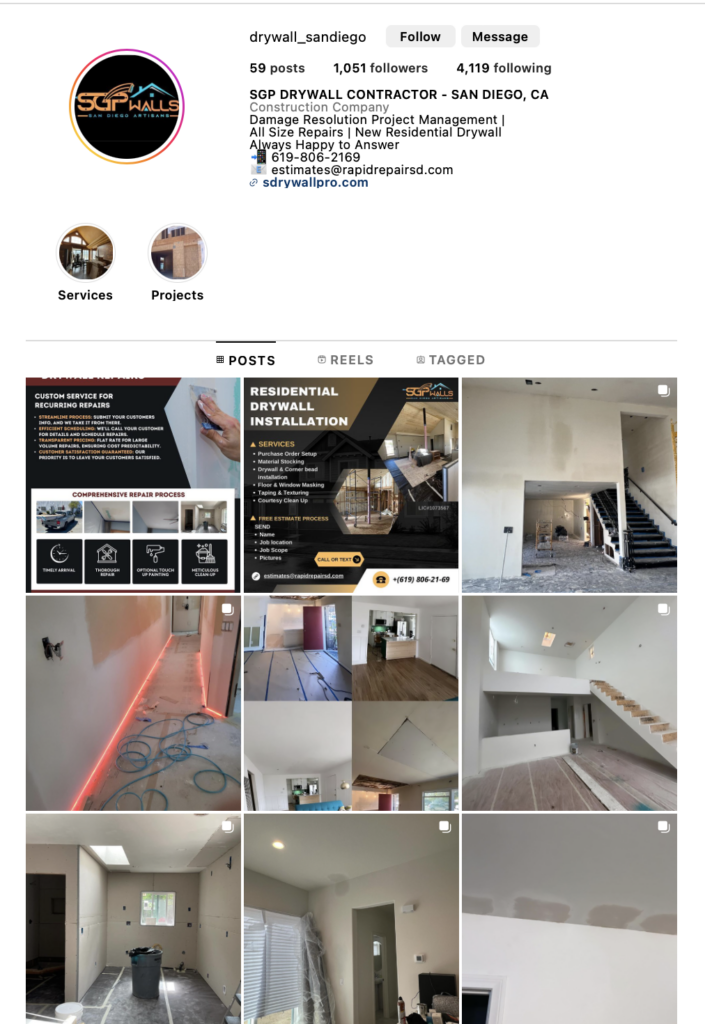Reliable Drywall Repair Techniques to Recover Your Wall surfaces
Reliable Drywall Repair Techniques to Recover Your Wall surfaces
Blog Article
Drywall Installment Made Easy: Tips for Perfect Results
Drywall installment is typically regarded as a complicated task, yet with the appropriate method and expertise, it can end up being a convenient venture. Understanding strategies for reducing, hanging, and completing drywall can significantly affect the outcome.
Selecting the Right Materials
Choosing the appropriate materials for drywall installment is essential to accomplishing a durable and aesthetically pleasing coating. drywall repair. The key component, drywall sheets, usually can be found in various densities, with 1/2-inch sheets being conventional for interior wall surfaces. For locations calling for additional moisture resistance, such as bathrooms or kitchens, consider utilizing eco-friendly board or concrete board, which are specially developed to stand up to moisture

In addition, selecting the right bolts-- either nails or screws-- is crucial for securing the drywall to the framework. Drywall screws are typically preferred for their holding power and reduced danger of popping. Lastly, think about the finishing touches such as guide and paint, which not only boost the look however also protect the drywall from wetness and wear.
Preparing the Setup Location
Prior to starting the drywall installation procedure, it is important to prepare the installation area completely. A tidy office decreases the danger of damages to existing items and allows for reliable movement during installment.
Next, inspect the walls and ceiling for any kind of flaws, such as fractures, openings, or mold and mildew. Address these issues in advance; patch any kind of problems and permit enough time for fixings to dry. Furthermore, make sure that electrical outlets, switches, and pipes are correctly positioned and accounted for, as this will impact drywall positioning.
Consider the environmental problems too. A stable temperature level and moisture degree are important for optimal adhesion and performance of the drywall materials. If required, utilize a dehumidifier or heating unit to produce appropriate conditions.
Trimming and Hanging Drywall
The trick to effective drywall setup depends on the precise cutting and hanging of the panels. Begin by gauging the room precisely, considering any type of obstructions such as electric outlets or windows. Use a straight side and an energy knife to score the drywall along your dimensions, after that snap it along the scored line for a tidy break. For even more complex cuts, such as around outlets, a drywall saw can be utilized for accuracy.

Always function from the top down and left pop over to this web-site to right, guaranteeing that you preserve a staggered pattern to boost stability. Effectively hanging the drywall sets the structure for a smooth coating, ultimately causing exceptional outcomes in your drywall task.
Taping and Mudding Methods
While correct cutting and dangling of drywall sets the stage, the next critical step entails mastering taping and mudding methods to make sure a smooth finish. Taping is crucial for strengthening joints and preventing cracks; it includes installing tape right into the used joint substance (mud) Start with a quality fiberglass or paper tape, applying the tape over the joint and pushing it right into the damp mud making use of a taping knife, guaranteeing no air bubbles stay.
When the tape remains in area, use a slim layer of joint substance over the tape, feathering the sides to create a smooth transition to the drywall surface. Allow this layer to dry completely before sanding it lightly to eliminate flaws. Repeat this process, applying extra coats of mud as required-- usually 2 to 3 layers-- while progressively expanding the application location with each layer to attain a smooth appearance.
After the final coat dries, sand the surface with a fine-grit sandpaper until smooth. drywall fort worth. Bear in mind to put on a mask throughout sanding to avoid inhaling dirt fragments. Understanding these taping and mudding strategies is essential for attaining a professional-quality coating in your drywall setup
Completing Touches for Perfection
Attaining a remarkable drywall installment goes past mudding and taping; it finishes in the completing touches that raise the overall appearance. These final actions are important in making certain a professional-grade surface that improves the looks of your space.
Begin by sanding the dried out joint compound to develop a smooth surface. drywall installation. After fining sand, wipe down the wall surfaces with a damp towel to remove any kind of dust bits, ensuring a tidy surface area for painting.
Following, apply a primer especially developed for drywall. This action is important, as it aids seal the joint compound and gives an uniform base for the topcoat. As soon as the primer dries, check for any flaws, and repair as needed.
Final Thought
To conclude, successful drywall setup pivots on the careful selection of products, comprehensive prep work of the installment location, and precise execution of reducing and hanging strategies. Proficiency of taping and mudding processes is vital for attaining a smooth coating. Additionally, attention to ending up touches, consisting of priming and touch-ups, ensures a professional-grade result. By adhering to these guidelines, the high quality of craftsmanship can be dramatically boosted, adding to the general visual and performance click for more info of the area.
Drywall installment is often perceived as a challenging task, yet with the right approach and expertise, it can come to be a workable venture.Choosing the suitable materials for drywall installment is critical to attaining a long lasting and aesthetically pleasing finish.Prior to beginning the drywall installation process, it is crucial to prepare the installment location thoroughly. Understanding these taping and mudding methods is vital for accomplishing a professional-quality finish in your drywall installment.
In final thought, successful drywall installation pivots on the careful option of products, detailed prep work of the installation location, and exact execution of reducing and hanging methods.
Report this page